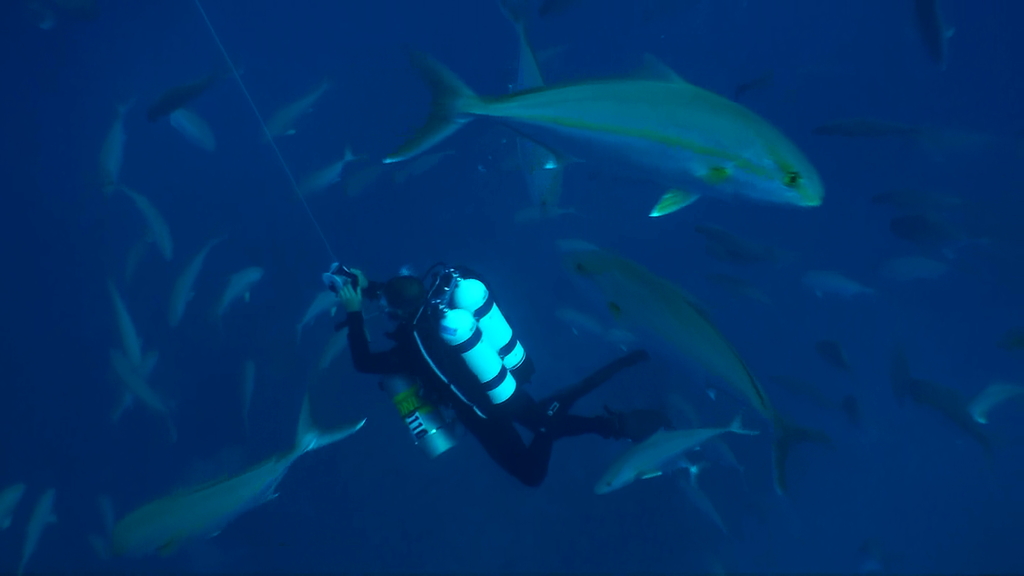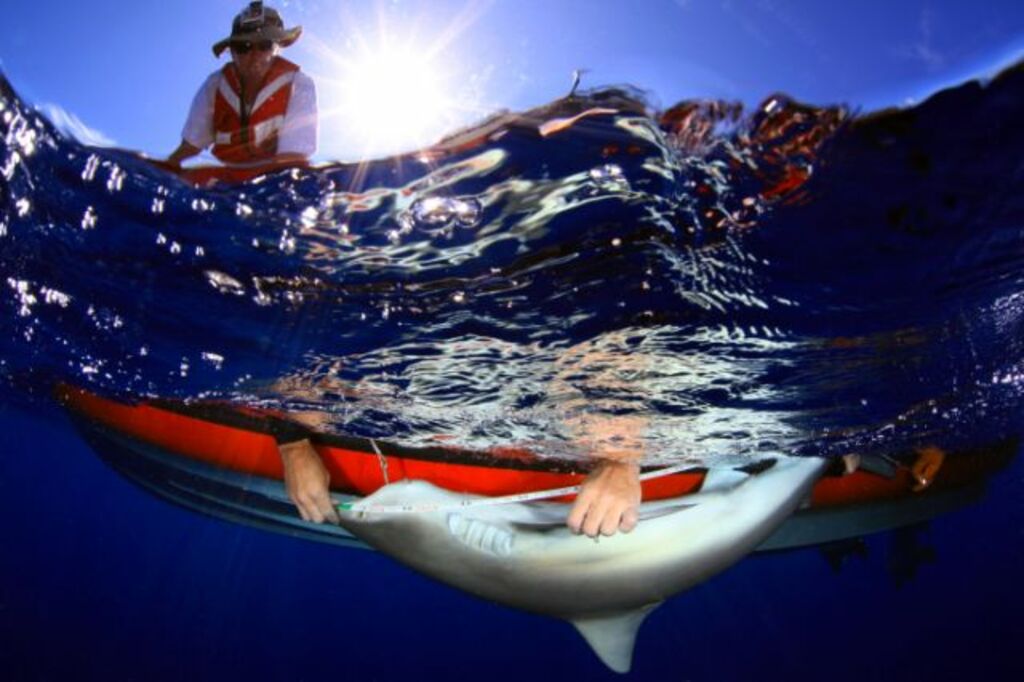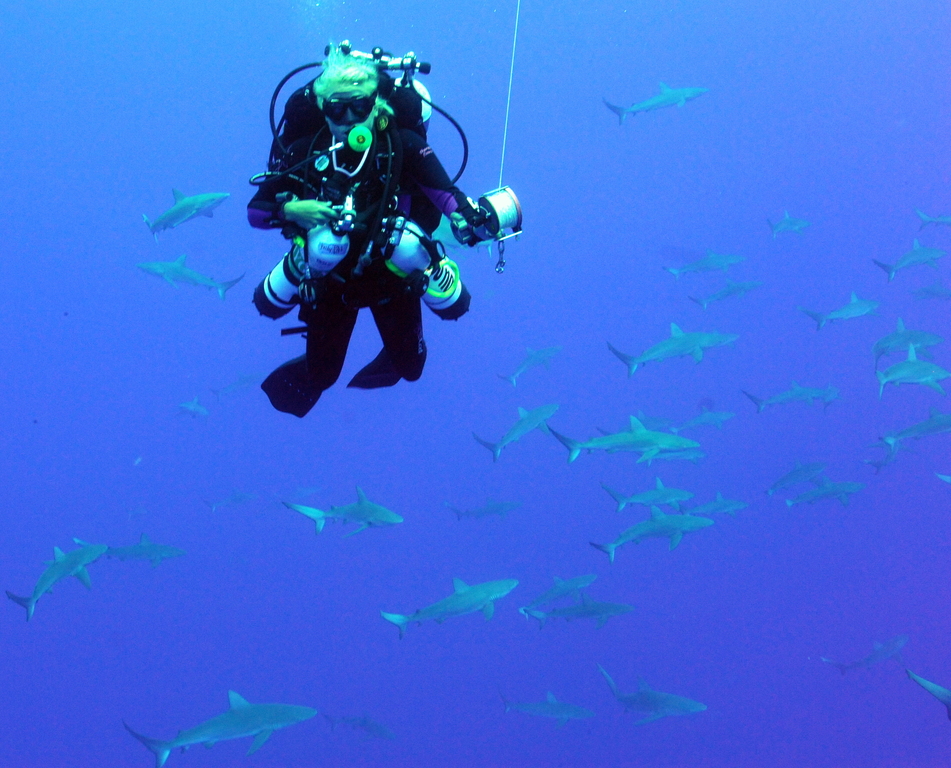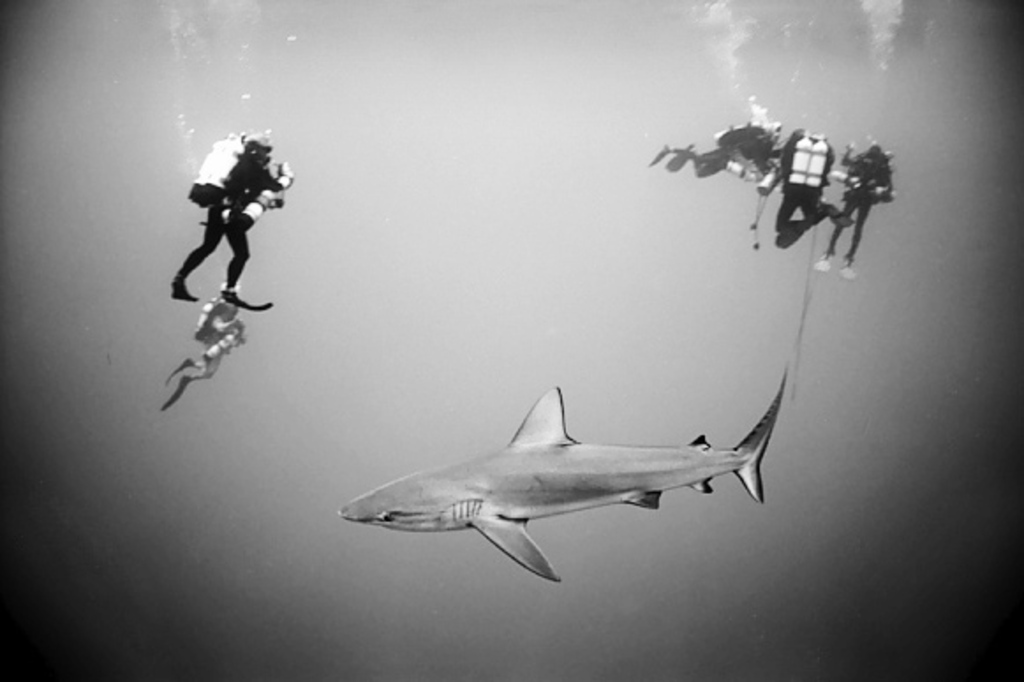Behind the science:
Movements and foraging of predators associated with mesophotic cora...
2018, January 22
Posted by Veronica Radice
Fields
Ecology
Physiology
Behavior
Focusgroups
Fishes
Locations
USA - Hawaii
Platforms
Acoustic Telemetry
SCUBA (open-circuit or unspecified)
SCUBA (open-circuit or unspecified)
“Predator movement and foraging between shallow and mesophotic reefs”
What was the most challenging aspect of your study (can be anything from field, lab to analysis)?
The deeper technical dives. We were the first group to be collecting reef fish from mesophotic reefs in the North western Hawaiian Islands, which are well known for having very large numbers of sharks. We were not sure how the sharks would respond during the hour of midwater decompression, if we were carrying bags of bloody fish. We put in lots of contingencies and safety measures but in the end the sharks showed very little interest in the fish we collected! We also had to deploy acoustic listening stations (for detecting tagged sharks and jacks) on the mesophotic reefs by literally dropping them over the side of the boat. The next year we had to dive to 60-70 m and try to find them. We did, which was a pleasant surprise. If we hadn’t found them a large part of our project would have failed.
What was the most memorable moment in undertaking this study?
The dives. Practically every reef we surveyed/studied had never been seen by humans before, so it felt like true exploration.
What was your favorite research site in this study and why?
Pearl and Hermes atoll. The atoll had the most spectacular mesophotic reefs of the entire island chain. Dramatic ledges and rocks, tons of reef fish, jacks and sharks swarming down and over the reefs, and fields of black coral. It was also the location where my colleagues Dr. Richard Pyle and Dr. Randy Kosaki caught their first specimen of a beautiful new species of butterfly fish (the species had been seen once from a submersible off Oahu but we found it to be quite abundant on the P&H reefs).
Other than your co-authors, with whom would you like to share credit for this work?
The crew of the NOAA ship Hi’ialakai who were driving all the boats, providing top-side and medical support and my colleagues who helped collect specimens (Kelly Gleason, Richard Pyle, Daniel Wagner, Greg McFall, Ray Boland, Christian Clark to name just a few).
Any important lessons learned (through mistakes, experience or methodological advances)?
We got much more efficient at collecting fish in full technical gear. We also did this study using open circuit mixed gas methods, but now we would do it much more efficiently on closed circuit rebreathers. We also learnt how important it was to make sure we were exactly over the reef before dropping in the water. At the beginning we would find reefs based on side scan sonar mapping done by the large mothership (the Hi’ialakai). We would take coordinates from those surveys and the next morning the small boats would drop divers on the ledges. We frequently ended up at 60-70 m on flat sand. After 10 minutes of looking for the reef we had to abort the dive and ascend. Obviously there could be no second attempt for the day so that was it. We changed our protocols and started to use the depth sounders on the smaller boats to make sure we were exactly where we wanted to be. It took more time to get in place, but we would hit the reef on every dive. With technical dives, a bad drop can cost you a days work.
Can we expect any follow-up on this work?
Yes, we are hoping to do follow up work on these reefs using some newer technology to try and answer specific questions that came up from our original study.
Featured article:
|
|
Movements and foraging of predators associated with mesophotic coral reefs and their potential for linking ecological habitats | article Papastamatiou YP, Meyer CG, Kosaki RK, Wallsgrove NJ, Popp BN (2015) Mar Ecol Prog Ser 521:155-170 |
|
.jpg)




